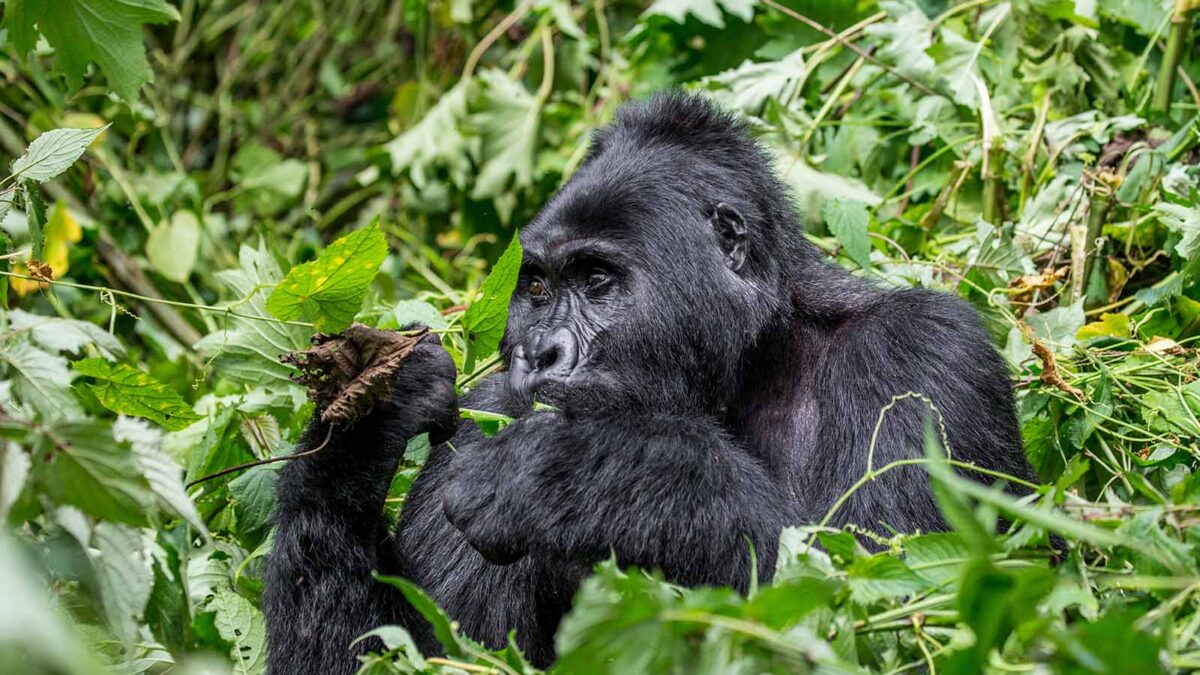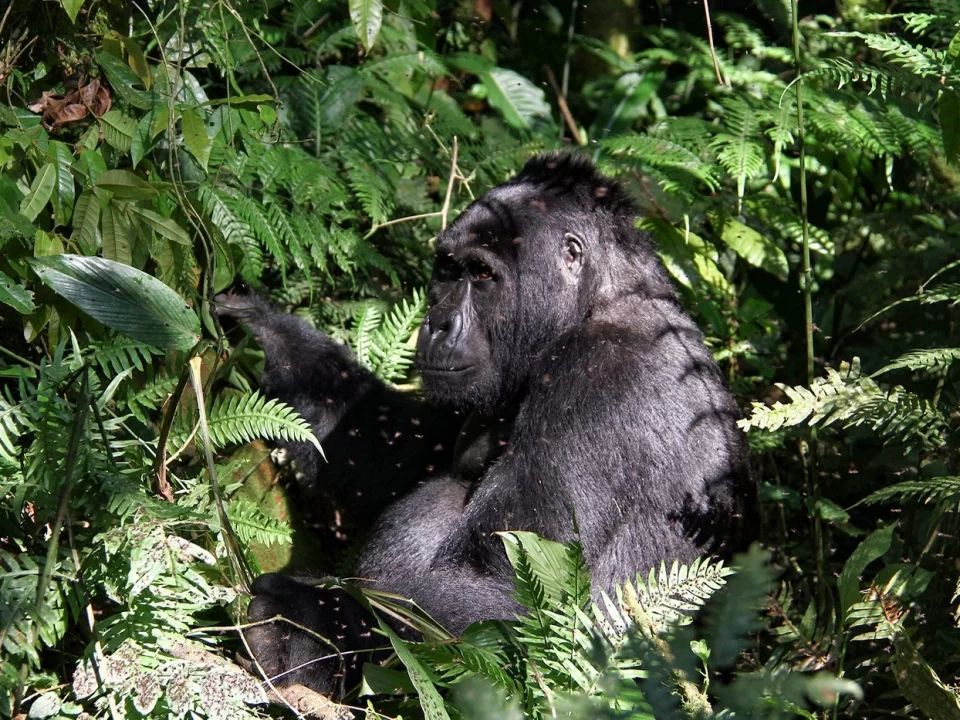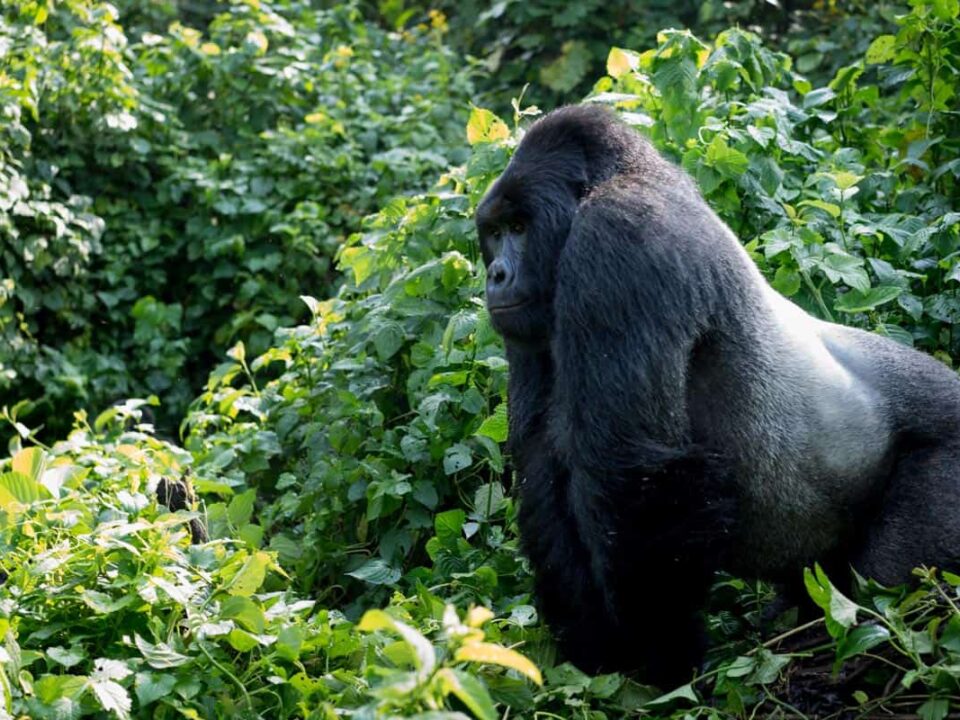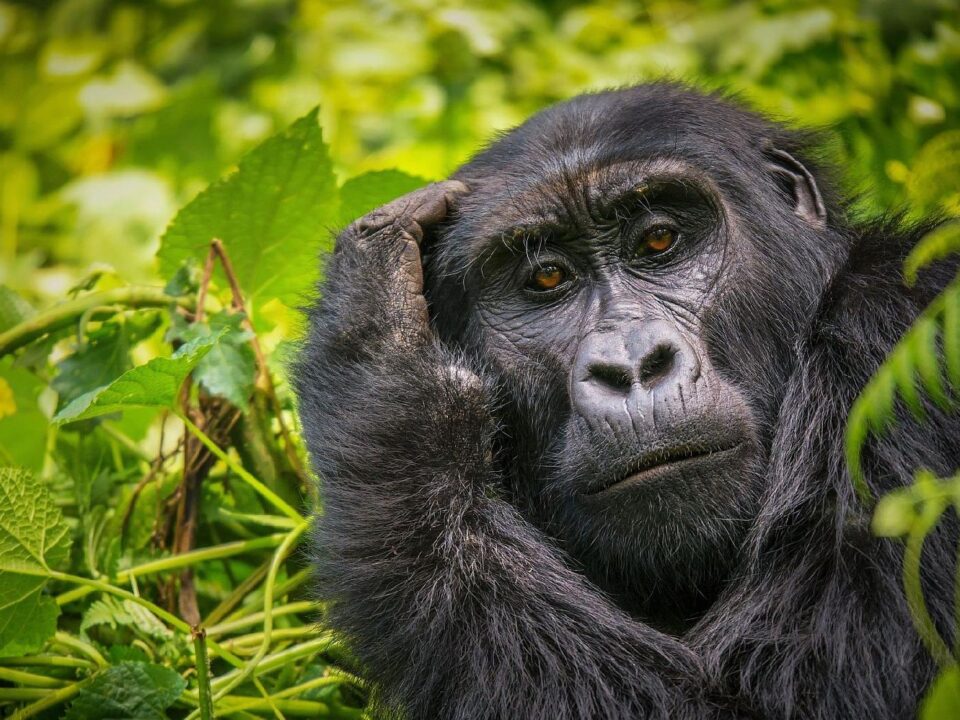
Cost of East African Resident Gorilla Permit
January 9, 2023
Cheapest way to see Mountain Gorillas in Uganda
January 10, 2023Chances of seeing Mountain Gorillas in Uganda, Rwanda and DR. Congo
Chances of seeing Mountain Gorillas in Uganda Rwanda and DR. Congo — If you’re planning a gorilla trek, one of the first questions that might cross your mind is how likely you are to actually see the majestic Mountain Gorillas. While wildlife encounters are never 100% guaranteed, your chances of observing these magnificent creatures are remarkably high. The probability of a successful sighting during a trek is about 98%, and that’s thanks to well-established tracking systems and the efforts of dedicated park rangers.
Where to Find Mountain Gorillas in Uganda, Rwanda, and DR Congo
Mountain Gorillas can only be found in three countries: Uganda, Rwanda, and the Democratic Republic of Congo (DRC). In Uganda, they live in two key locations: Bwindi Impenetrable National Park and Mgahinga Gorilla National Park. In Rwanda, you’ll find them in Volcanoes National Park, while in DRC, they reside in Virunga National Park. Uganda, notably, is home to around 50% of the world’s mountain gorilla population, making it one of the best destinations for gorilla trekking.
Why Your Gorilla Sighting Is Likely to Happen
Several factors contribute to the high chances of seeing Mountain Gorillas during your trek. One major factor is gorilla habituation, a process in which wild gorillas are gradually accustomed to human presence. It typically takes up to three years for a group of gorillas to become comfortable with humans. As a result, tourists are allowed to visit only habituated gorilla groups, ensuring that the gorillas are calm and won’t flee or show aggression, providing a safe and enjoyable experience for trekkers.
Moreover, gorilla tracking efforts are supported by a team of expert trackers who locate the gorillas before dawn using signs like their nests or droppings. These skilled trackers use GPS and radio tools to guide trekking groups directly to the gorillas, further boosting the chances of a sighting.
Each day, park authorities allocate groups to trekkers based on their physical capabilities. For example, those who are fit may be assigned groups that are located farther from the park entrance, while those with health concerns or mobility limitations are assigned easier-to-reach groups. This thoughtful group allocation helps ensure that every traveler, regardless of fitness level, has an excellent chance of encountering the gorillas.
What Could Affect Your Chances of Seeing Gorillas
While gorilla sightings are almost guaranteed, there are some rare circumstances that could prevent a successful encounter. In most cases, if the assigned group moves deeper into the forest, rangers can redirect trekkers to a different gorilla group. However, there are a few exceptional situations that could cause a cancellation.
In some instances, gorilla trekking may be called off due to natural disasters, though this is extremely rare. On occasion, gorilla trekking may also be suspended in regions where political instability or safety concerns arise, particularly in areas prone to militia activity. For example, in the past, Uganda and Rwanda faced challenges with rebel groups in forested regions, but both countries have worked diligently to remove such threats. The DRC has also increased security in Virunga National Park, ensuring that tourists are safe and the gorilla trekking experience can go ahead as planned.
Health and Safety Considerations for Gorilla Trekking
For the safety of the gorillas, it’s important that you’re in good health before embarking on a gorilla trek. Even a minor illness like a cold or flu can potentially spread to the gorillas, putting them at risk. If you’re feeling unwell, park authorities may ask you to reschedule your trek at no additional cost, but this could cause inconvenience, especially if it impacts your travel plans.
It’s also essential to follow the new health protocols, especially post-pandemic, which include wearing masks and maintaining social distance during trekking activities. These measures are in place to safeguard both visitors and the gorillas.
Best Time to Go Gorilla Trekking
The best time to visit the gorillas in Uganda, Rwanda, or DR Congo is during the dry seasons, which generally run from June to September and December to February. During these months, the terrain is easier to navigate, and there is less rainfall. However, if you’re looking for a quieter and more affordable experience, consider visiting during the wet season (April to May or October to November). While the weather may be wetter, the reduced number of visitors and lower permit rates make for a more peaceful and budget-friendly trek.
Planning Your Gorilla Trek
When planning your gorilla trek, it’s essential to book in advance, as permits are limited, especially during peak travel times. If you’re looking for a stress-free experience, working with a trusted local tour operator, like Trek Africa Expeditions, can make the booking process smoother. They handle all logistics, from securing permits to organizing transportation and ensuring you have a memorable, hassle-free experience.
For more tips and information on mountain gorilla tracking, check out our comprehensive guide to gorilla trekking in Uganda or learn about gorilla tracking in Rwanda.
Conclusion
Whether you’re trekking in Uganda, Rwanda, or the DRC, the chance to see Mountain Gorillas is incredibly high. The combination of meticulous planning by park authorities, expert tracking teams, and the habituation process ensures that your trek will be a memorable and high-probability experience. While nothing in nature is guaranteed, you can rest assured that your chances of encountering these incredible creatures are excellent.




